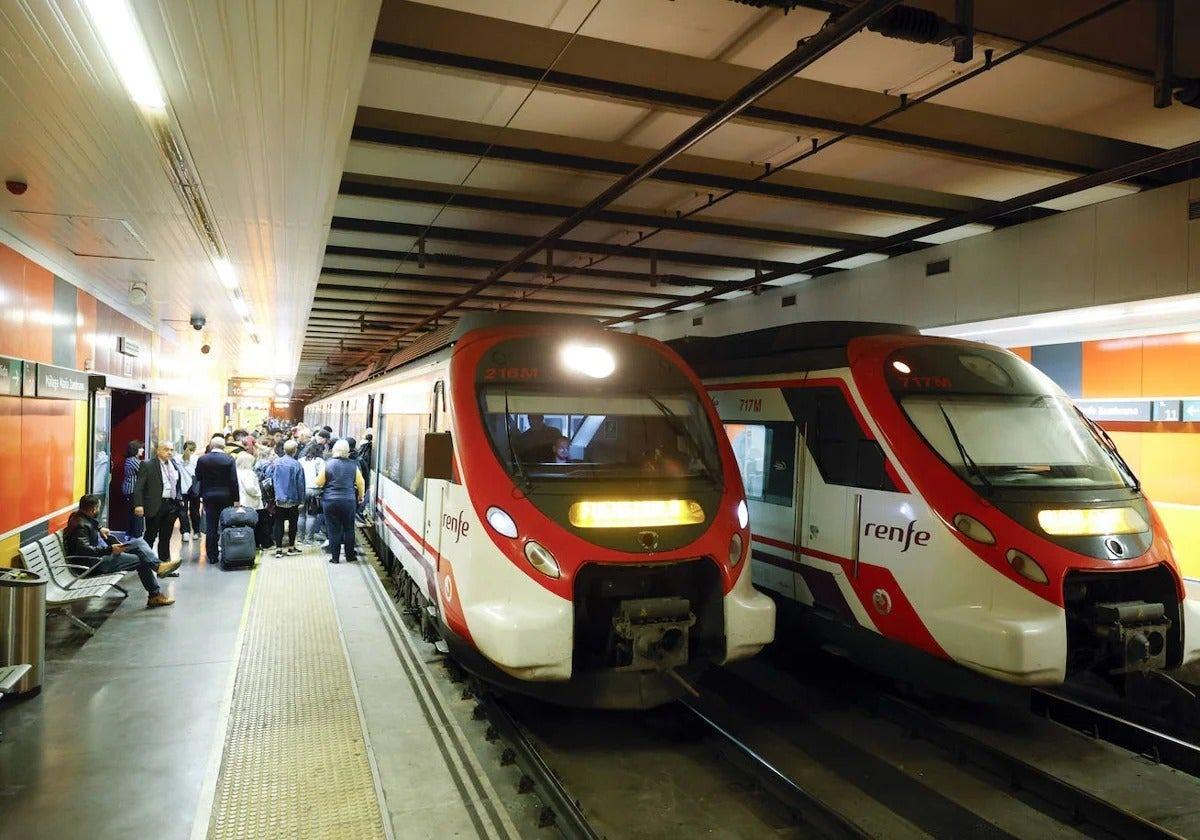Spanish government awards contract for feasibility study of coastal train between Nerja and Algeciras
Spain's Minister of Transport Óscar Puente will provide more details about this project at a forum organised by SUR on Friday
Spain's Ministry of Transport and Sustainable Mobility has chosen the end of January 2026 (or no later than February) as the deadline for receiving an "initial study of alternatives" on how and where it will be possible to build the tracks for the coastal train from Nerja to Algeciras, along the Costa del Sol and into the Campo de Gibraltar area.
The schedule established by the governmental technicians continues to be scrupulously fulfilled: the latest milestone, which has just been marked, was the awarding of the expected feasibility study of the Costa del Sol rail corridor. The temporary consortium formed by consultancy firms WSP Spain-Apia and Multicriteri-MCRIT will be in charge of drafting the document, which will cost 991,911 euros (IVA sales tax included). Therefore, there were no surprises and the winner was the same company proposed by the contracting committee last March, once the deadline for raising any concerns had passed.
The countdown for the consultancy firms to draw up the document will begin in June. The study should be finalised, having passed through all of its phases, in November 2026. However, some of the most important key points will be known long before that, such as the route alternatives considered "technically feasible".
Óscar Puente will provide more details about this project at the forum organised by SUR this Friday 9 May. It will be held at the NH hotel (attendance by invitation only), where Puente will be in discussion with SUR's editor-in-chief, Manolo Castillo.
"The contract will allow us to analyse far-reaching solutions to improve mobility and railway connectivity between the municipalities of the Costa del Sol, with the extension of the Malaga-Fuengirola local short-distance C1 line to the west, to Algeciras, passing Marbella and Estepona, as well as to the east, to Nerja," confirmed the ministry.
The feasibility study is divided into five sections: Malaga-Fuengirola (where there is already a standard gauge Cercanías line); Fuengirola-Marbella; Marbella-Estepona; Estepona-Algeciras and Malaga-Nerja. The transport department admits that the C1 line is in great demand, as it connects the city of Malaga with Malaga Airport - the fourth busiest in the country in terms of passenger volume - and with towns on the western Costa del Sol such as Torremolinos, Benalmádena and Fuengirola.
The first milestone of the feasibility study is expected between January and February 2026, when the 'initial alternatives study' will be announced
It is a conventional railway line, electrified and equipped with double track along part of its route. Although improvements and investments have been made in the last decades, "it still presents certain limitations and does not satisfactorily cover the mobility needs of the population, so it is necessary to study options to improve the service, such as strengthening the existing infrastructure or building a new corridor".
"Moreover, it is committed to bringing the benefits of rail transport to the rest of the citizens living on the Costa del Sol, as currently the line does not serve densely populated municipalities west of Fuengirola such as Estepona or Marbella, nor does it reach the eastern Costa del Sol." The feasibility study will contain a demand study based on a model built specifically for this project and a financial and socio-economic profitability study. The socio-economic profitability figures will serve as an aid in decision-making about the suitability of the project (or part of it).
First administrative step
A key element is that the scope of the feasibility study must comply with Article 5.3 of the rail sector act. This will be the first step towards administrative and legal approval.
According to the "tentative schedule" of the work, available in the tender documents, ministry technicians have laid out three phases. As per this timeline, the first key milestone of the feasibility study will take place toward the end of phase I, when, in January 2026 (just over six months from now), the "initial alternatives study" will be released.
It refers to the route, that is, where (physically) and in what form (Cercanías, high-performance or a mix) could the platform for the railway tracks from Nerja to Malaga, and from there to Marbella, Estepona and Algeciras be built.
The forecast coincides with the announcement made by Óscar Puente, last December, when he said: "In one year, we hope to have the route of the coastal train clear." The initial idea of the ministerial technicians is to follow, whenever possible, the "affected area" of the A-7 motorway, which is a reserved space located on both sides of the road.
The second phase includes a more detailed analysis of the alternatives in the different sections into which the action has been divided (five in total). It will also examine in depth the areas and operating scenarios of the proposed alternatives, as well as the travel times, demand and profitability.
Phase III includes quality control and supporting formalities, and will be carried out in parallel to the previous two phases. The feasibility study should be ready for final approval in November 2026, with a conclusions document and a summary format for public presentation.

